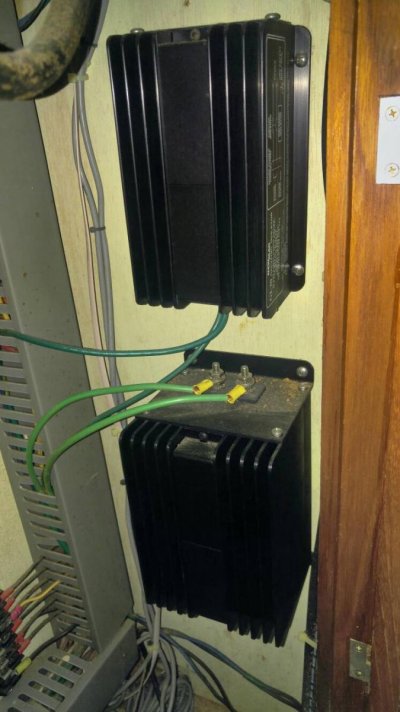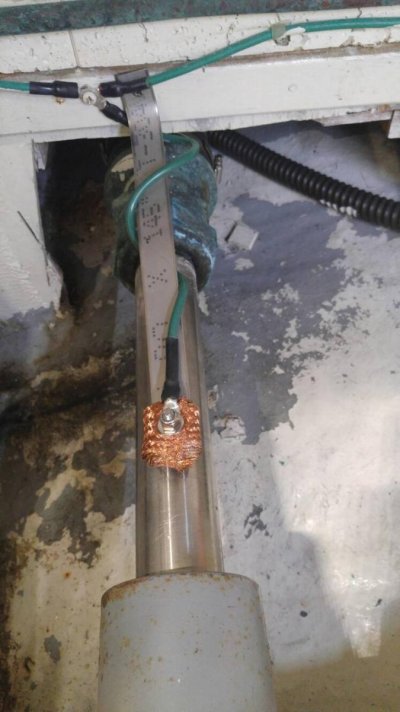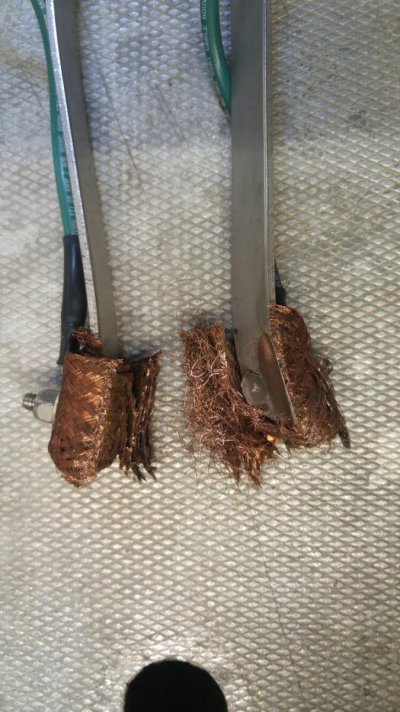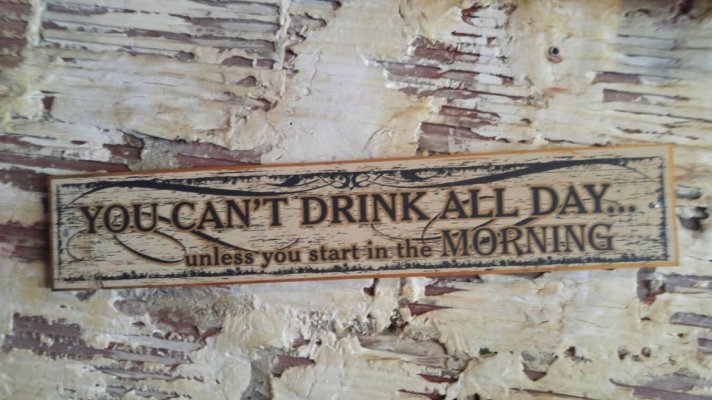My memory is that, although ABYC defines a conductor, in general, as anything able to carry a current, the phrase "bonding conductor" is used specially in ABYC E-2 to describe only those conductors intended to distribute cathodic protection among the bonded components.
My understanding is that interfacing hardware isn't considered a "bonding conductors", but instead a means of attaching bonding conductors
My understanding is that brushes, slip rings, wipers, etc, are a type of interfacing hardware known under the standard as "shaft contactors".
My understanding is that the prohibition against braided copper in E-2 covers only "bonding conductors", and not "shaft contactors".
In other words, my belief is that ABYC E-2 no more prohibits shaft brushes, or any other type of shaft contactor, from being made from braided copper than it requires them to be made of exactly (a) at least #8 AWG tinned, stranded copper wire or (b) at least 1/32"x1/2" copper strip (and possible, thicker, depending). And, there ain't no such thing as a brush made of either.
I'm not sure how ABYC defines a brush, but assuming ABYC defines in a way that would include one made of braid, my memory is that ABYC E-2 does require that a brush not score the shaft.
Having said all of that, I'm not sure that I like the idea of a weighted braid over the shaft. And, I'm not sure that a professional electrician would consider it to be good tradesmanship. And, I'm not sure that something somewhere doesn't prohibit it.
But, I don't think it is the referenced section of ABYC E-2, which applies only to "bonding conductors", because, well, if nothing else, shaft brushes and slip rings are proof by example that it does not.
If I had to guess at a rationale for this it is that brushes and other "shaft contactors" are considered isolated mechanically wearable items subject to inspection and replacement as needed, whereas the "bonding conductors" are considered a major, if not the major, part of the cathodic protection system, are much harder to /fully/ inspect and service, and are intended to be permanent parts of the system.







